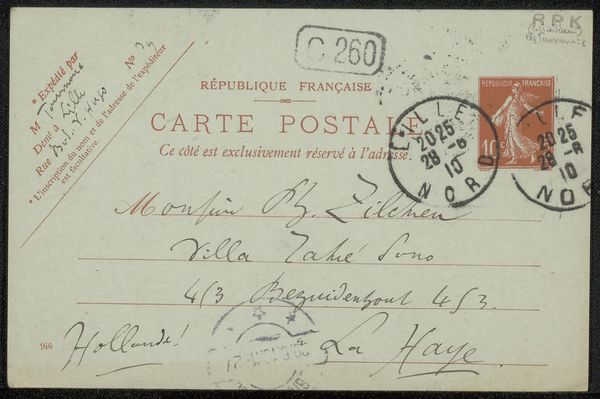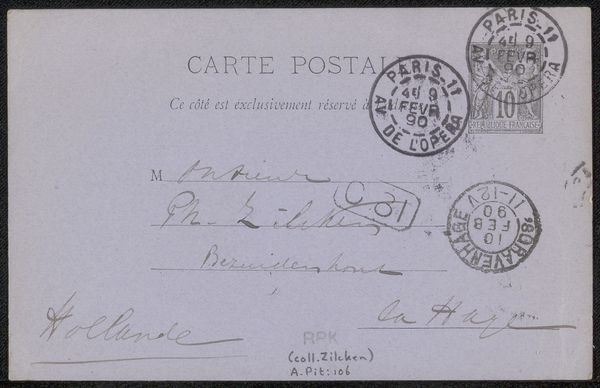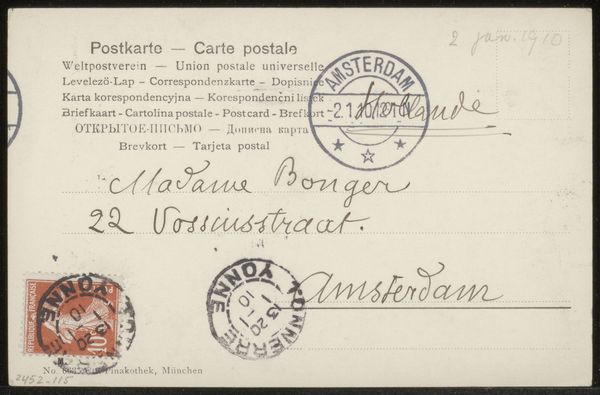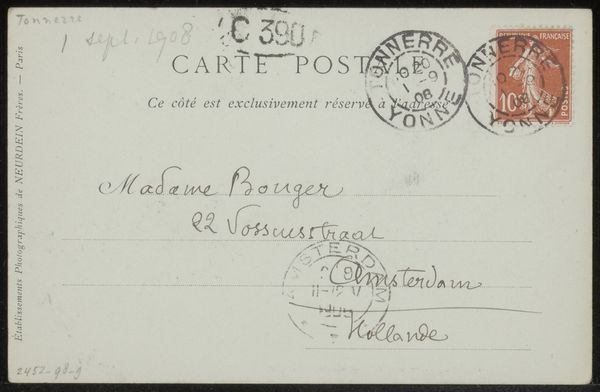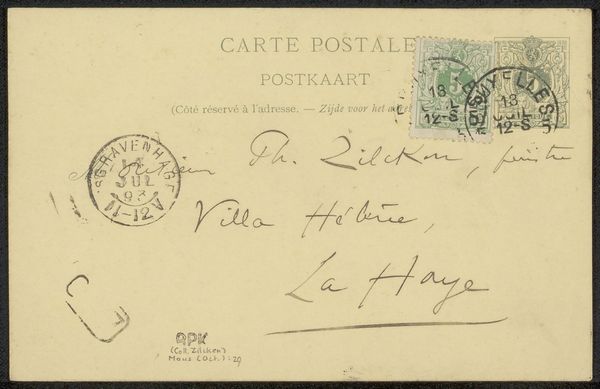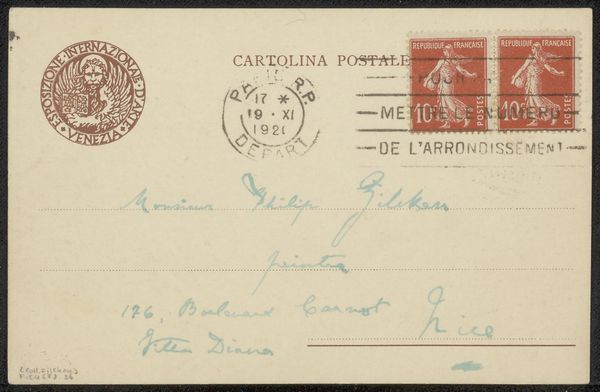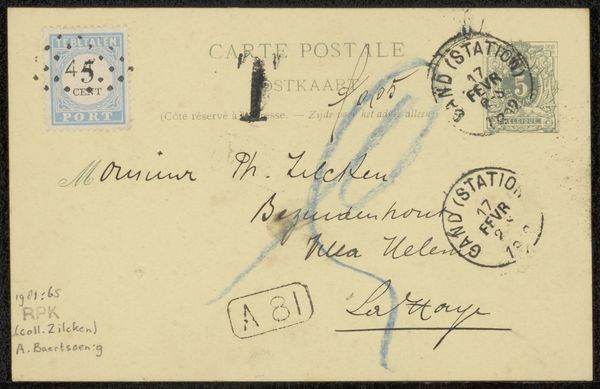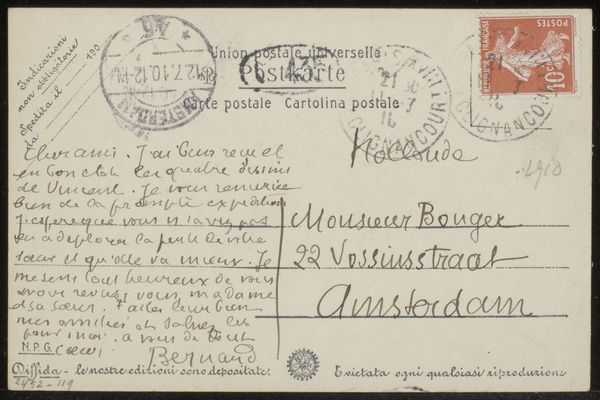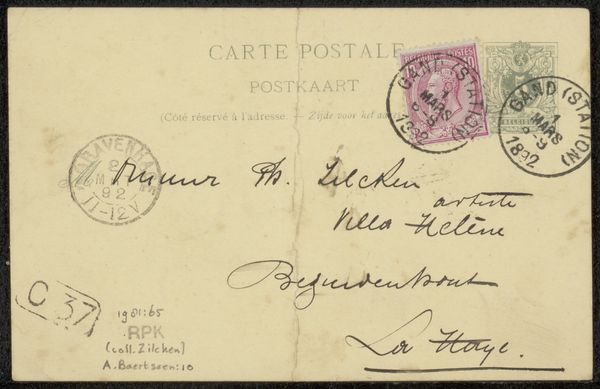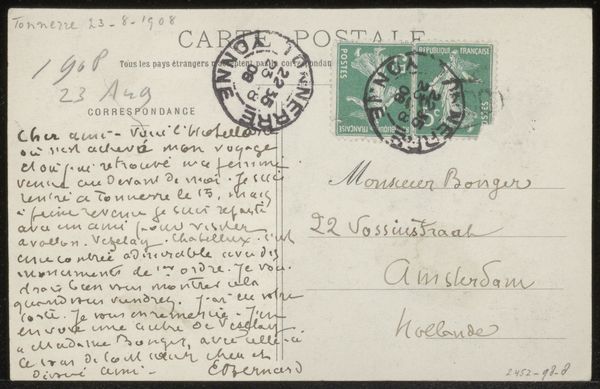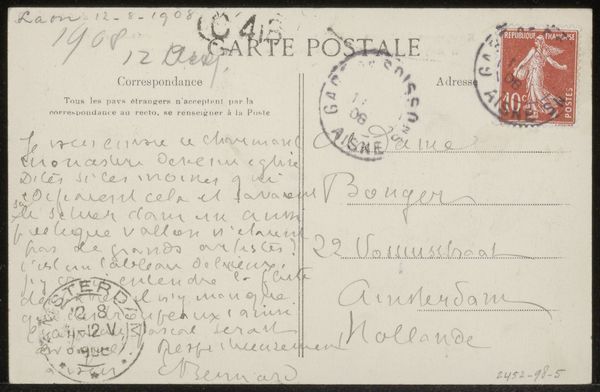
Prentbriefkaart aan Andries Bonger en Anne Marie Louise van der Linden before 1924
0:00
0:00
paper, ink
#
script typography
#
hand-lettering
#
old engraving style
#
hand drawn type
#
hand lettering
#
paper
#
personal sketchbook
#
ink
#
hand-drawn typeface
#
pen work
#
sketchbook drawing
#
sketchbook art
#
calligraphy
Copyright: Rijks Museum: Open Domain
This is the back of a postcard, sent by the French artist Émile Bernard in 1908. The intended recipient was André Bonger, a Dutch art collector and close friend of Vincent van Gogh. The postcard itself offers a glimpse into the social networks of the European avant-garde at the turn of the century. Postcards were a popular means of communication, cheap and easily available. They were especially useful for artists like Bernard, who moved between artistic hubs like Paris and Amsterdam. Note the stamps and postmarks, signs of institutional power expressed through design and text. The act of corresponding, of maintaining connections across geographical distances, was crucial to the formation of artistic communities and the exchange of ideas. To understand the context of this postcard better, we can turn to sources such as artist’s letters, biographies, and exhibition catalogs. By focusing on such details, we gain a deeper understanding of the social and institutional forces that shaped artistic production.
Comments
No comments
Be the first to comment and join the conversation on the ultimate creative platform.
